I have an old Revox B780 HIFI amplifier / radio tuner. It was working perfectly fine except that it could not longer automatically search for radio stations and lost its memory of stored stations after power was disconnected.
Some research revealed that this was a well-known problem with the power supply. A specialised online shop even sold ready-assembled kits to rework the power supply PCB:
- replace all electrolytic caps with new ones
- replace all tantalum caps with new electrolytic caps
- C6, C8, C9, C10 (see schematics below) got newly added 100nF foil bypass caps
- all semiconductor devices replaced
- trim potentiometer replaced
- only resistors and C5, C7 and C11 were kept
After this (and trimming the replaced potentiometer) everything seemed to work fine. The voltages are within tolerances, they look clean to the eye, the batteries are being charged and the radio station search works again.
BUT now I have a fairly loud 100 Hz hum on the speakers. An example signal from the speaker output looks like this:
I checked the power amplifier and preamplifier stages by grounding their inputs to their respective signal grounds. Both are silent. (The noise floor of my oscilloscope is too high to look into the signal before the power amplifier stage.)
I finally tracked the problem down to the tone control: If I set the "tone control defeat" button, which bypasses the tone control PCB with a relay, the hum disappears. I am really stumped because neither did I touch this PCB nor was this problem present before.
This is the tone control PCB.:

This is the power supply PCB that I reworked. The red boxes show the caps that I did not replace.
 I checked all voltages with an oscilloscope and they appear to have no appreciable ripple and are within the specified tolerances. Just as an example, this is the +15V output:
I checked all voltages with an oscilloscope and they appear to have no appreciable ripple and are within the specified tolerances. Just as an example, this is the +15V output:

List of things I have tried:
- Using small clamps I have grounded various stages of the signal path:
- ROUT to GR: no hum
- RIN to GR: have hum
- TP1 to GR: no hum
- same behaviour on the left channel
- This suggests to me that the problem is somewhere in the green box (and the equivalent on the left channel)
- I have two problems with this conclusion however:
- I did not touch this PCB.
- There is no way this circuit should be able to create the 100 Hz hum from what I can see. 100 Hz suggest an issue with the power supply - which incidentally I did touch...
- Also the fact that it is on both channels again suggests a power supply issue rather than a fault with a single transistor. I.e. it would be unlikely that the same transistor has somehow suffered damage on both channels, right?
- I took out the new IC1 and IC2 from the reworked power supply PCB and put the originals back in. -> no change, the hum remains.
My questions:
- How does the circuit in the green box work? I am guessing that it is a unity gain buffer but I am having trouble understanding how it works and to what power supply imperfections it might be particularly sensitive. And why would only this stage be exhibiting the 100 Hz hum when just downstream almost the same circuit is repeated which does not exhibit any hum?
- Any advice on what to try next? Replace the remaining old caps in the power supply even though they have worked fine before the revision? I.e. there was no hum? Replace the semiconductor devices in the green box?
- Might this be a grounding problem? I.e. might I have somehow damaged the ground connection to the transformer while opening the case? But again, if this is the case, why does only the green box hum but not the almost identical circuit just after it?
